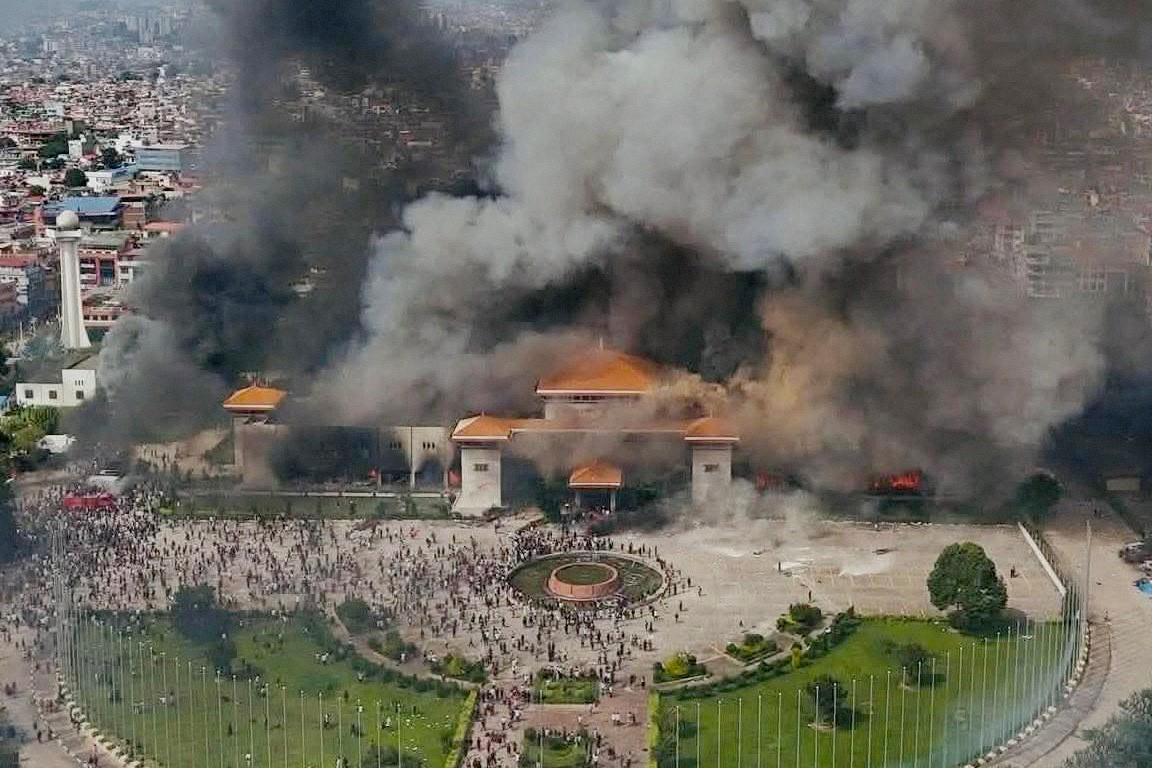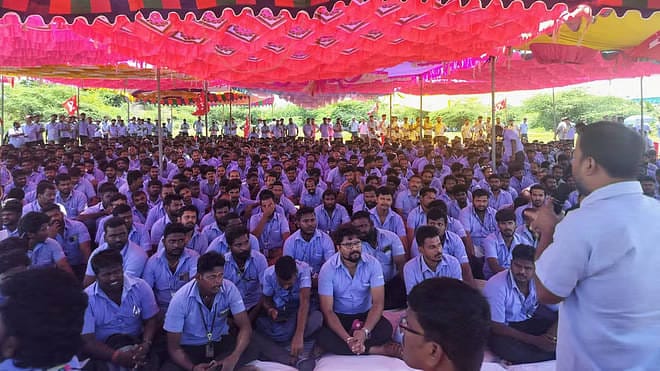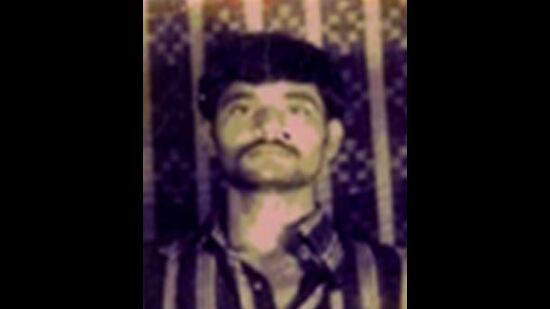Protesters have set fire to the federal parliament, Supreme Court, political party officers and homes of senior politicians. The Prime Minister has resigned, along with a whole host of cabinet ministers. The army is evacuating politicians from their homes. After putting up with years of crushing poverty, the Nepalese youth have had enough. They have entered the stage of history.
Karl Marx once described how under capitalism, “accumulation of wealth at one pole is, therefore, at the same time, accumulation of misery, agony of toil, slavery, ignorance, brutality, and mental degradation at the opposite pole.” Nepal is a textbook example of this process.
Average wages in the country are $1,400 per year with around one in five living in poverty. To add to this, unemployment is at 10.7 percent, whilst youth unemployment stands at 20 percent. The top 10 percent of households hold 40 percent of the land whilst a huge proportion of the population hold little to no land.
This desperate situation forces around 1,000 people per day to leave the country looking for work abroad. In total, there are around 2 million Nepalese in this position. They send home remittances worth 26 percent of the country’s total GDP, with half of all Nepali families relying on financial support from relatives living abroad to get by.
Whilst the masses scramble around to get by, a tiny privileged few in the country live the lives most of us could only dream of. This has provoked a huge amount of anger, which has been reflected in a social media trend over the recent period. Video after video has appeared on TikTok showing the contrast between the lives of the rich and those of the vast majority. It focuses in particular on so-called ‘nepo babies’: privileged children of politicians and businessmen.
The son of the politician Bindu Kuma Thapa (from the ruling Nepali Congress), who has been accused of corruption, is pictured standing next to a Christmas tree. This tree, however, is not made out of bark and leaves; it is made out of Louis Vuitton, Gucci and Cartier boxes!
It went viral, with the hashtag #PoliticiansNepoBabyNepal. Similarly, one video of the son of the former Supreme Court Chief Justice Gopal Parajuli, shows this individual next to various cars and in expensive restaurants with the caption: “Openly flexing luxury cars and watches on social media. Aren’t we tired of them by now?”
There have been countless high-profile scandals over the recent period, which have exposed the flagrant corruption of those at the top of Nepalese society. Last year, several top officials were convicted of embezzling up to $10.4 million in a 2017 deal with Airbus.
The year before, several former cabinet ministers were charged in the ‘Bhutanese refugees scandal’. This involved squeezing huge amounts of money out of poor Nepalese individuals. Desperate for work, they were presented as Bhutanese refugees so they could be sent to the US. There are endless examples of these gangsters plundering the resources of the people for their own gain.
Social media ban
In this general context, on Thursday 4 September the government banned 26 social media companies including WhatsApp, Facebook, Instagram and YouTube.
This was a measure, it was claimed, taken to deal with “fake news”, “hate speech” and “online fraud”. This government of crooks and gangsters claimed that individuals with fake IDs were committing “cybercrime” and “disrupting social harmony”. They therefore demanded social media companies appoint a liaison officer in the country. Those that failed to do so were banned from the country.
These excuses were, however, immediately seen for exactly what they are: barefaced lies used to cover up the suppression of democratic rights.
Given the fact that just under 8 percent of the population live abroad, this sudden measure meant that many Nepalese people were suddenly cut off from any communications with their loved ones.
Engels described bourgeois democracy as the best possible shell for capitalism because people believe they have the chance to change things. However, in order to maintain bourgeois democracy, you have to actually be able to offer the masses something. With no bread to offer the masses, the Nepalese government clearly therefore resorted to restricting the democratic rights of the masses to try and prevent opposition.
Events
On Monday 8 September at 9am Nepalese time, an event was called that was meant to be a “peaceful protest with cultural events and fun”, according to one of the organisers. Whilst it had been sparked by the social media ban, the anger of the protesters was directed far beyond this single measure by the government. As one demonstrator explains, “rather than [the] social media ban,” the main aim of the demonstrators was “to stop corruption”.
One demonstrator, Aayush Basyal, described how there were huge numbers of young people present. He pointed out that they were inspired by protests in Sri Lanka and Bangladesh as well as the TikTok videos exposing the enormous inequality in the country. Another protester said that he was there because he was “standing for our future”. He wanted the country to be “corruption-free so that everyone can easily access education, hospitals, medical [facilities…] and for a bright future.”
Over a long period of time, there has been a gradual build up of frustration in Nepalese society.
In 2006, following a growing Maoist insurgency, a big protest movement erupted, forcing the end of the two-century-old monarchy, which was officially abolished two years later. Since then, there have been 14 different governments, none of which has improved the living standards of the mass of the population, and none of which has completed its full five-year term.
Prime Minister KP Sharma Oli of the Communist Party of Nepal (United Marxist-Leninist) who resigned yesterday, was the fifth prime minister in five years. He was in a coalition government with a bourgeois party. This has been a common feature in Nepalese politics since 2008. The main opposition party, Communist Party of Nepal (Maoist Centre), was in power until 2022 in coalition with the Monarchist party!
There are plenty of so-called Communist parties, but whenever any of these have come to power they have only managed capitalism and the austerity that the ruling class requires. Additionally, much like the rest of the establishment, they have their own ‘nepo babies’. The granddaughter of Pushpa Kamal Dahal, the leader of the Maoist Centre party, drew the ire of Nepalese workers and young people for an extraordinarily grand wedding recently. All of this has discredited them in the eyes of the masses.
The overthrow of the monarchy was a great step forward, but it has not really changed anything as far as the living standards of the majority of Nepalis are concerned. Therefore, growing anger, bitterness and frustration built up a huge quantity of inflammable material in Nepalese society. All that was needed was a spark, which was provided on 8 September.
At the protest, The New York Times described how thousands of young people marched towards parliament. They were stopped, however, by a line of police. The demonstrators could see “members of parliament were watching [them] from the roof of the building”.
A few days beforehand, Prime Minister Oli had said that demonstrators “can’t independently think, and they want to talk about independence.” The majority of demonstrators would have perceived the corrupt and out of touch politicians as mocking them. All the crowd wanted was a decent standard of living, but they were being treated like mindless fools. This, according to an unnamed demonstrator, “fuelled” an “insane” rage.
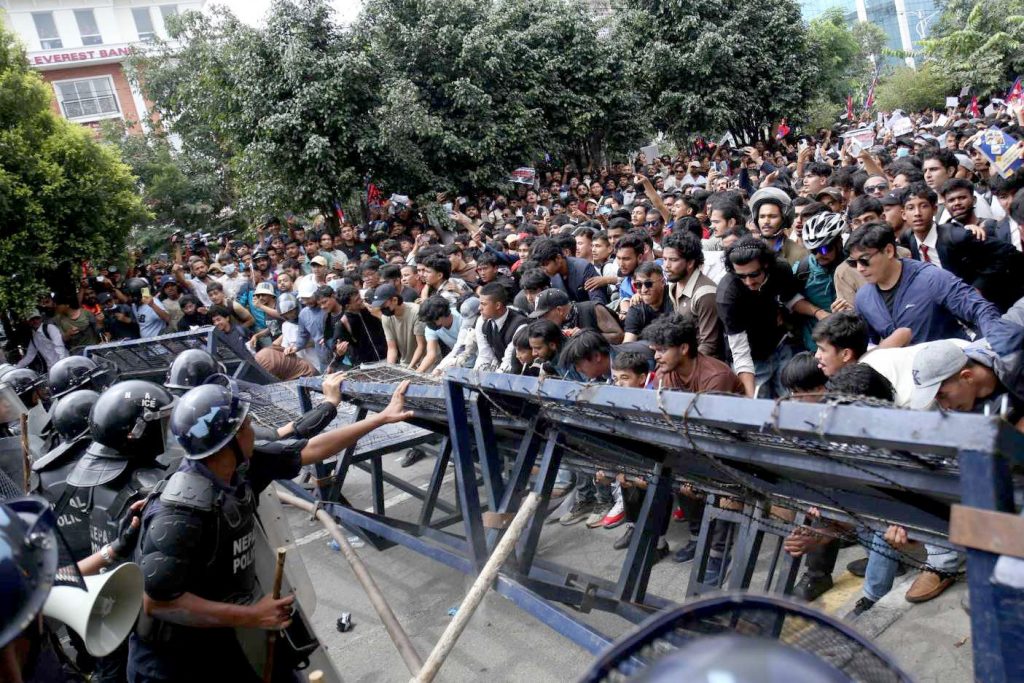
The crowd snapped. They pushed through the barbed wire, forcing the police to retreat as they surrounded the parliament building. The police responded by firing tear gas and water cannons, but they were outnumbered and powerless to stop the crowd. “By 1pm, the protest site was chaos”, with tear gas shells and rubber bullets flying around the heads of protesters.
Another protester described watching someone “screaming at the police and after two seconds he dropped dead on the floor”. The police had escalated, firing live ammunition on the crowd.
Rather than quelling the anger, these acts of repression only fired people up. The protesters fought back with anything they could lay their hands on, whether that was branches of trees or water bottles. Some eventually managed to storm the parliament building. The protest movement then began to spread beyond Kathmandu to Biratnagar, Bharatpur and in Pokhara in West Nepal, and was met with widespread repression from the authorities. In total, it seems that 19 were killed and up to 400 wounded.
In a complete panic, the government then attempted to impose a curfew, preventing people from gathering outside the parliament and other government buildings. This order was completely ignored. That evening, demonstrators gathered outside the parliament and government buildings. As one 23-year-old protester explained, “nearly 20 people were murdered by the state”. It was time, therefore, for the murderers to “take responsibility”.
Like a stick of dynamite that is lit and then explodes, the pent-up rage of the masses was released. Every meal skipped, every month of delayed wages, every video demonstrating the wealth of the ruling class added to the enormous anger that was unleashed in righteous revenge.
Having managed to storm parliament, the protesters burnt it down. To punish all political parties for almost two decades of failure, multiple party offices were burnt down. Rejecting the unfair legal system, which allows systematised corruption, they torched the Supreme Court. Wanting to exact vengeance for the organised corruption, they proceeded to set alight the homes of the Prime Minister and other politicians. Hearing that politicians were being evacuated by the army via helicopter, they broke into the airport to burn that down too. The night’s events showed that, when the masses move, there is no power on earth that can stop them.
Having stared into the abyss, the ministers of state pulled back. Realising they were unable to stop the protests through force, they then tried to make concessions. The government lifted the ban on social media, promised a committee to “investigate the violence” and even to “pay relief for the families of the dead” as well as “free treatment for the injured people”. In floods of crocodile tears, Prime Minister Oli said he was “deeply saddened” by the deaths. But the protests continued.
When a revolutionary movement is on the upward curve, there is very little that can stop it. If the government attempts repression, this only angers the masses and provokes them into further action. If they carry out concessions, however, this only encourages further action; it is, after all, getting results!
The bourgeoisie and the government, at this stage, were in blind panic. A succession of government ministers resigned, like rats fleeing a sinking ship. On top of this, there was disquiet in the Prime Minister’s own party. This party is called the ‘Communist’ Party of Nepal (Unified Marxist-Leninist) yet all it has done whilst it has been in power is to participate in the management of the capitalist system.
A number of members of the party at a local and central leadership level have begun resigning in protest over what was taking place. Some may have a conscience, but others clearly resigned only due to fear of the wrath of the masses.
Eventually, on Tuesday morning, Prime Minister Oli finally gave in. He explained that “in view of the adverse situation in the country”, he was resigning in order to “resolve” matters “politically in accordance with the constitution.” In fact, this was far from a voluntary resignation. He had to be evacuated in a helicopter by the army.
This is a fantastic victory. The masses of Nepal have faced down the forces of repression, forced a reversal of the government’s policy and then the collapse of the government itself.
What must be emphasised, however, is that this is one victory in one battle. The war remains to be won. And the enemies of the Nepalese masses are licking their wounds and regrouping. The President, who remains in post, has called for ‘national unity’. He urged “everyone, including protesting citizens, to cooperate for a peaceful resolution” of the situation. He appealed to “all parties to exercise restraint”. The President talks of national unity, but the rich and poor in Nepal are not part of the same nation; given the unbelievable inequality, the rich are living on another planet!
Additionally, the Nepalese Army has ordered a nationwide curfew and also released a statement urging people to “exercise restraint”. The fact that the President and the Army are having to beg the protesters themselves to exercise restraint is an indication that they are not in control of the situation. In fact, as one journalist described, for some time there seemed to “be no one in charge” whatsoever. The masses could not be stopped by the forces of repression, but equally, there was no force guiding and organising this elemental force.
Yesterday evening, the security services issued a joint call for “a peaceful resolution through dialogue to restore order and stability”. As Marx explained, ultimately, the state is nothing but armed bodies of men in defence of private property. The officers, chiefs of police and top bureaucrats in the state have been carefully selected and educated to represent the interests of the bourgeoisie, nothing more and nothing less.
Those fighting for a change in Nepal should pay close attention to the words of these people. What do they wish for? Do they wish to end corruption or to use the wealth of Nepal collectively? No! They want to “restore order and stability”. In other words, they wish to go back to the situation as it was on Sunday 7 September, perhaps with a change of personnel at the top. That would mean the same poverty, the same unemployment and the same corruption.
Another element in the mix is the geopolitical situation. Nepal can’t be seen in isolation. There is also a power struggle taking place in the region. India had traditionally been the main power dominating Nepal, but Prime Minister Oli was seen as closer to China. With his removal, the imperialist powers will be circling, looking to get ‘their guy’ into power.
What next?
One individual who has been thrust to prominence over the recent period is Balendra Shah, the Mayor of Kathmandu. Originally gaining fame as a hip-hop artist who produced songs railing against corruption, he won the election in 2022 standing against all the political parties.
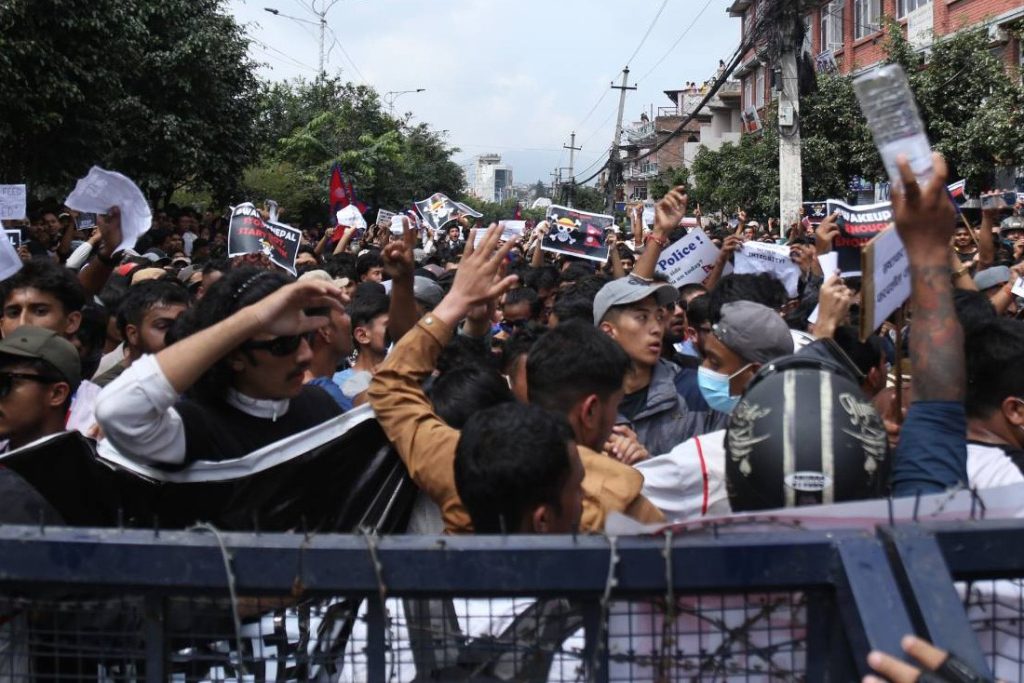
He won precisely because he was seen as an ‘outsider’ candidate. He has again called on the masses to show “restraint”. He implies that victory is already at hand because “your murderer has resigned”. From now on, he says, “it is your generation that must lead the country.”
Similarly, an NGO called Hami Nepal, formed by another rapper named Sudhan Gurung, has released a list of demands. These include:
- “First – The immediate resignation of this government.
- “Second – The resignation of all ministers across every province.
- “Third – Swift and uncompromising prosecution of those who ordered the shooting of our innocent brothers and sisters.
- “Fourth – The formation of an interim government led by the youth, with a vision for a just and accountable future.”
It must be said to anyone who is inspired by the events in Nepal: this is not enough! It is excellent that the Nepalese masses have taken inspiration from what happened in Bangladesh and Sri Lanka. However, as well as inspiration, these examples provide a stark warning. The sad fact is, despite the amazing heroism and bravery of the Sri Lankan and Bangladeshi masses, nothing has really changed in these countries.
In Bangladesh you also had a youth-led movement against poverty, oppression and inequality. This movement removed the government of Sheikh Hasina and a number of the leaders of the revolution were brought into government. However, whilst the faces in the government changed, there was no break with capitalism. This means that poverty, oppression and inequality remain in the country.
Fundamentally, it is the capitalist system that is the root cause of the troubles of the masses. This is especially the case in the less economically advanced countries which are dominated by imperialism.
As one protester correctly states, “the Prime Minister’s resignation alone is not enough”. It is time to “break the cycle” of the various national parties coming to power and changing nothing fundamentally for the masses.
Ultimately, to be victorious, the Nepalese masses must not be fooled by an attempt to bring in certain leaders of the movement without overthrowing capitalism.
The need for leadership
Nepal, Sri Lanka, Bangladesh and Indonesia are all examples of revolutions that have taken place in the last few years. In normal times, the mass of the population don’t pay attention to politics. Either they don’t have the time, after long working hours, or they don’t have the inclination (because nothing ever changes), and usually it is a case of a combination of both.
There are times, however, when the rage of the masses builds to such a crescendo, that they break through all barriers and involve themselves in politics directly. That is how Trotsky defines a revolution.
When the masses first enter politics in a revolution, however, they do so with a certain amount of inevitable naivety. They quite rapidly learn things, such as the state being a force of repression in defence of private property. They do so not by reading The State and Revolution, but by being blasted by water cannon.
The trouble is the masses will not keep struggling forever. Seeing your friends shot dead, being choked by tear gas or running in terror from police is very tiring. It is often the case, therefore, that the masses are unable to fully realise exactly what path forward is necessary in time.
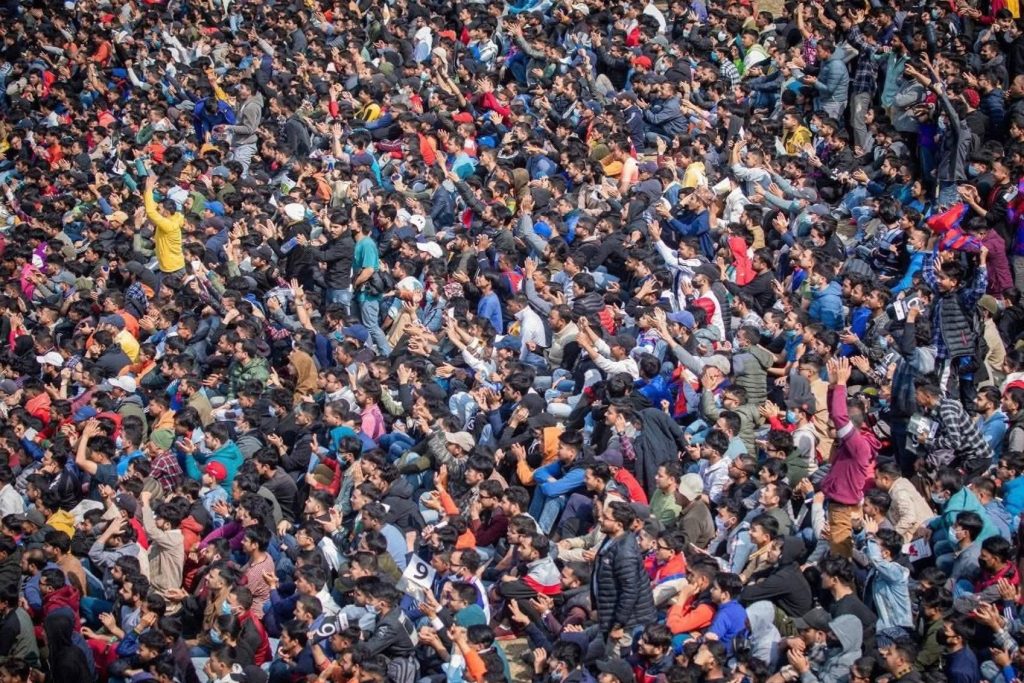
There are times when the rage of the masses builds to such a crescendo, that they break through all barriers and involve themselves in politics directly / Image: Rahul Raut, Twitter
That is where revolutionary leadership comes in. Revolutions will happen whether revolutionary Marxists are there or not. You only need to watch the news these days for proof of that. What determines whether a revolution will be successful or not, however, depends on whether it has the correct leadership.
If there was in Nepal at present a genuine communist party that had roots in the masses and was big enough to be heard by the masses, the entire situation could be transformed. This party could act as a catalyst that would speed up the learning process of the masses. They could, step by step, win over the leadership of the working class and lead them to power.
Essentially, what we have seen in Nepal is much like the February Revolution of 1917 in Russia. The masses have demonstrated their power by overthrowing the Prime Minister. But they do not yet appear conscious enough to go the whole way towards the overthrow of capitalism. What is missing in Nepal at present is precisely a Bolshevik Party which could lead the masses to the overthrow of the capitalist system.
The ruling class is at present unable to quell the movement either through repression or concessions. The masses, however, do not know the way forward. If there was a party that was big enough to be heard and which called on workers and peasants to form committees in defence of the so-called Gen Z Revolution in every town and in every neighbourhood. If each of these committees was to then elect representatives to a national coordinating committee, this would be the first step in creating a completely different form of rule.
Rather than changing which set of politicians would manage this corrupt system, you could have a workers’ government. If that happened, they could easily call out to the workers and peasants of Indonesia to do the same. It would set the entire Asian continent ablaze.
Revolutionaries around the world should pay close attention to Nepal. One journalist in Nepal said that everyone is “surprised and shocked” at what has happened. No one “thought it would escalate to this level.” The motto of today, however, is expect the unexpected. In pretty much every country around the world right now, there is immense pressure on living standards and a hatred of the status quo, the political leaders and institutions, with no real big defeats of the workers in memory.
We can’t know exactly where or when the next revolutionary explosion will happen. But the conditions in Nepal exist right now across most of the planet. Nepal today will be Britain, France, the US and elsewhere tomorrow.
Revolutions are to be expected. What will determine their success is if revolutionary parties are built in time to lead them to victory.

